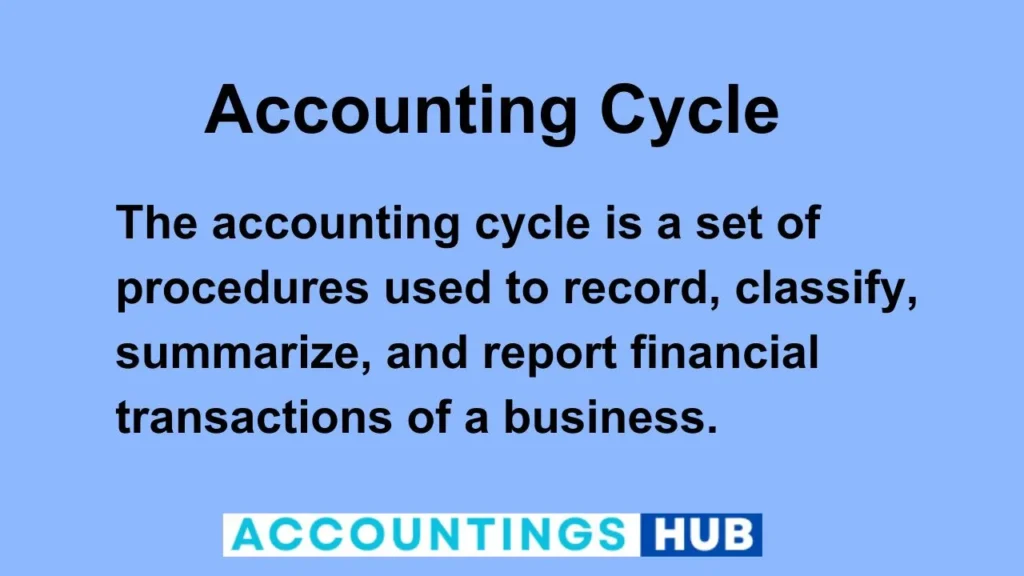The accounting cycle is a set of procedures used to record, classify, summarize, and report financial transactions of a business. It is a continuous process that begins with the initial recording of a transaction and ends with the preparation of financial statements.

Steps of the Accounting Cycle
The accounting cycle is typically divided into eight steps:
- Identify and analyze transactions. The first step is to identify and analyze all the financial transactions that have occurred during the accounting period.
- Record transactions in a journal. Once the transactions have been identified and analyzed, they are recorded in a journal. A journal is a chronological record of all the financial transactions of a business.
- Post transactions to the ledger. The next step is to post the transactions from the journal to the ledger. Moreover, The ledger is a collection of accounts that summarizes all the financial transactions of a business.
- Prepare an unadjusted trial balance: After the transactions have been posted to the ledger, an unadjusted trial balance is prepared. The unadjusted trial balance is a list of all the accounts in the ledger and their balances.
- Make adjusting entries: The unadjusted trial balance may not be accurate due to accruals and deferrals. Accruals are expenses that have been incurred but not yet paid, while deferrals are revenues that have been received but not yet earned. To correct for these inaccuracies, adjusting entries are made.
- Prepare an adjusted trial balance: After the adjusting entries have been made, an adjusted trial balance is prepared. The adjusted trial balance is a list of all the accounts in the ledger and their adjusted balances.
- Prepare financial statements: The final step is to prepare financial statements. Financial statements are a summary of the financial condition and performance of a business. They typically include the balance sheet, income statement, statement of cash flows, and statement of retained earnings.
- Close the books: The books are closed at the end of the accounting period. This involves transferring the balances of the temporary accounts to the permanent accounts.
The benefit of the Accounting Cycle
Here are some of the benefits:
- It helps to ensure that all financial transactions are recorded accurately.
- It provides a systematic way to summarize and report financial information.
- helps to identify errors and omissions in the financial records.
- It provides a basis for decision-making by managers and investors.
Frequently Asked Questions
Why is the accounting cycle important?
The accounting cycle is important because it helps maintain accurate financial records, allows for the preparation of reliable financial statements, ensures compliance with accounting standards, and provides a clear audit trail for financial transactions.
Why is the accounting cycle important?
It is important because it helps maintain accurate financial records, allows for the preparation of reliable financial statements, ensures compliance with accounting standards, and provides a clear audit trail for financial transactions.
How often does a company typically complete the accounting cycle?
Companies often complete the accounting cycle on a monthly, quarterly, or annual basis, depending on their reporting requirements and the complexity of their financial transactions.
How often does a company typically complete the accounting cycle?
Companies often complete the accounting cycle on a monthly, quarterly, or annual basis, depending on their reporting requirements and the complexity of their financial transactions.
